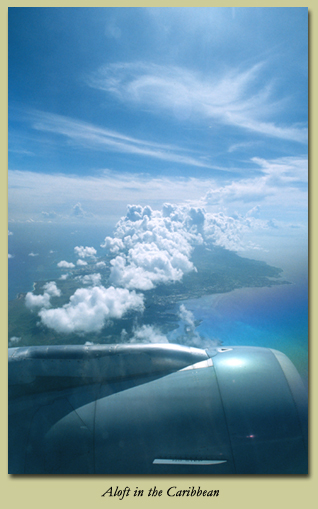 St. Croix is located approximately 80 miles southeast of Puerto Rico, and at 84 square miles, it is the largest of the U.S. Virgin Islands, which also consist of St. Thomas, St. John and some 47 or so, smaller, islets and cays. From New York, flying time to the Virgin Islands is roughly three hours and it’s about two and a half hour flight from Florida.
St. Croix is located approximately 80 miles southeast of Puerto Rico, and at 84 square miles, it is the largest of the U.S. Virgin Islands, which also consist of St. Thomas, St. John and some 47 or so, smaller, islets and cays. From New York, flying time to the Virgin Islands is roughly three hours and it’s about two and a half hour flight from Florida.
Carib and Arawak Indians originally inhabited St. Croix, historical records indicate. Six European countries subsequently colonized it before Denmark sold it to the United States in 1917, along with the other islands for the sum of 25 million dollars.
At this site, Frans Lawaetz, a Virgin Islander of Danish descent gives a short synopsis of the island’s history, but the site contains an unflattering and racist description of the Carib Indians.
Today the Virgin Islands, like Guam, are an unincorporated territory of the United States; English is the main language, U.S. currency, the means of exchange, and we have U.S. citizenship. The Virgin Islands has an elected governor, a 15-member legislature and one nonvoting representative in Congress.
At times, though, the Virgin Islands are quietly referred to as a US colony, but there is no independence movement to speak of as there is in Puerto Rico. We cannot vote in national presidential elections and therefore are not represented in the national political system in any meaningful capacity, says William Boyer, author of America™ Virgin Islands: a History of Human Rights and Wrongs.”
Tourism is the number one industry and attracts an estimated two million visitors each year. While tourism is unquestionably important, one of the criticisms of this industry is that it often makes natives feel like outsiders in their own home. This problem, though, is not unique to the Virgin Islands “it seems to be a permanent feature of the tourism industry.
Tourists, everywhere, are always shielded from unpleasant truths and realities. In slick brochures and on the Web, social, political, economic and racial problems are always omitted. Residents are always friendly and visitors never stop to consider that the charming colonial architecture also represent a not-so friendly, and frequently brutal, past.
